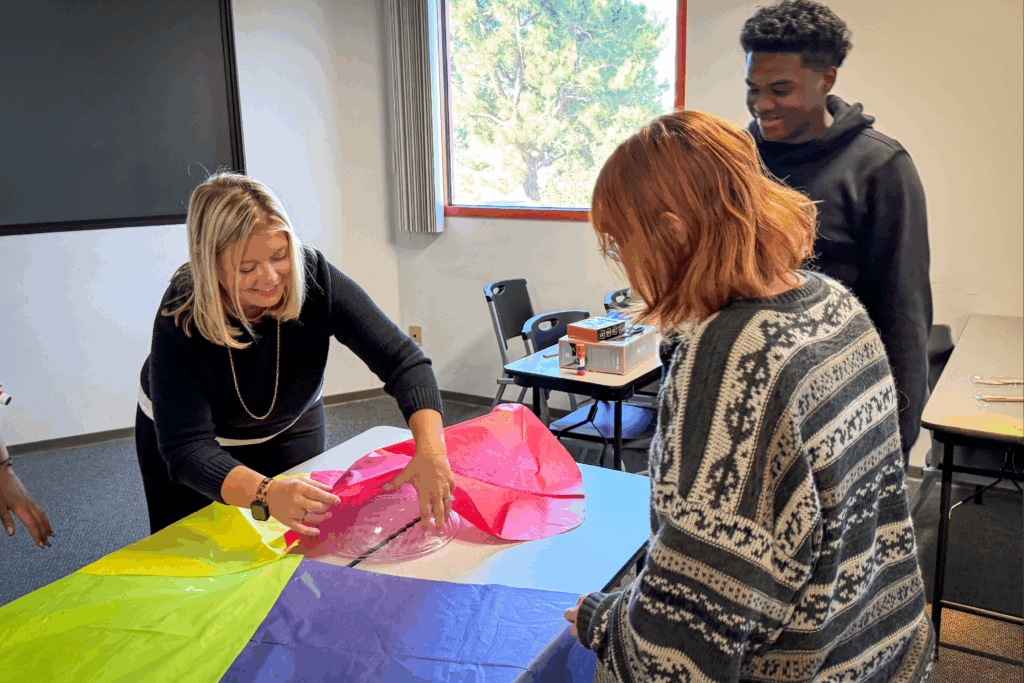From Classroom to Cockpit: How Navispire’s STEM Kits Fuel Real-World Learning
In today’s classrooms, educators are continuously searching for ways to make STEM (Science, Technology, Engineering, and Mathematics) engaging, practical, and relevant. Navispire bridges this gap by providing hands-on STEM kits designed to inspire future innovators and aviators. Through immersive experiences like launching rockets, building gliders, and testing designs in wind tunnels, students transform abstract STEM principles into real-world applications.
The Power of Experiential Learning
Research shows that students learn best when they can see, touch, and experiment with concepts. According to the Association for Experiential Education, hands-on learning enhances student engagement and knowledge retention by providing meaningful, real-world context (Association for Experiential Education, 2020). Navispire’s STEM kits bring this philosophy to life. Instead of relying solely on textbooks and lectures, these kits encourage active problem-solving, teamwork, and critical thinking.
By turning a classroom into a collaborative lab, students not only retain more knowledge but also develop a deeper interest in STEM careers. These experiences lay the foundation for skills in engineering, aviation, and science that extend far beyond the classroom. Hands-on learning builds confidence and resilience, especially for students who may struggle in traditional academic environments.
Experiential learning also fosters equity in the classroom. Students from diverse learning backgrounds can engage with the material in ways that feel natural to them. This inclusivity is critical in STEM education, where many students may feel left behind by jargon-heavy, passive instruction. Navispire kits bring every student to the table, no matter their starting point.
Kit Highlights and Educational Objectives
Rocket Launch Kit
- Objective: Teach Newton’s Laws of Motion
- Skills Developed: Force calculations, trajectory analysis, safety in experimental design
- Application: Students build and launch their own rockets, calculate thrust and height, and reflect on how physics applies to real-world aerospace challenges.
Balsa Wood Glider Challenge
- Objective: Understand aerodynamics and flight stability
- Skills Developed: Iterative design, testing hypotheses, teamwork
- Application: After constructing gliders, students test and adjust wing configurations to explore lift, drag, and stability. A classroom-friendly wind tunnel can extend this lesson further.
Tissue Paper Hot Air Balloon Kit
- Objective: Demonstrate thermal lift and buoyancy
- Skills Developed: Heat transfer understanding, lightweight material engineering, project planning
- Application: Students learn how hot air causes lift and how materials influence flight. This activity encourages creativity as students design, decorate, and test their balloons.
Wind Tunnel Testing Kit
- Objective: Visualize airflow and test drag coefficients
- Skills Developed: Data collection, engineering refinement, use of scientific equipment
- Application: Students test different shapes and materials to understand how drag affects speed and flight. The results can be used in design competitions or research presentations.
Curriculum Alignment
All Navispire kits are designed with the AOPA You Can Fly curriculum in mind, adapted to fit aviation-focused programs, CTE pathways, or general science curricula. With built-in flexibility, the kits serve as powerful tools for differentiated instruction. Whether you’re preparing for standardized testing or designing a capstone project, Navispire kits provide the resources needed to align hands-on projects with learning goals.
Tips for Maximizing Impact
- Pre-Activity Prep: Use included lesson guides to introduce core concepts ahead of the activity.
- Student Roles: Assign roles like project manager, materials handler, and data analyst to encourage team responsibility.
- Debrief and Reflect: Build time for students to analyze results, troubleshoot problems, and share discoveries.
- Cross-Curricular Connections: Incorporate math (data graphing), language arts (lab journaling), and history (aviation pioneers) to deepen interdisciplinary understanding.
- Encourage Iteration: Let students test, fail, revise, and retest—just like real engineers and scientists.
Navispire’s STEM kits turn traditional learning on its head by putting exploration, experimentation, and engineering into students’ hands. By combining high-quality materials, clear instruction, and an emphasis on real-world relevance, Navispire equips educators with the tools to inspire tomorrow’s scientists, engineers, and pilots.
With thoughtful design, curriculum alignment, and built-in flexibility, these kits are more than classroom tools—they’re launchpads for discovery. When students connect with STEM through curiosity and creativity, they’re not just learning—they’re preparing for a future where they can truly soar.

